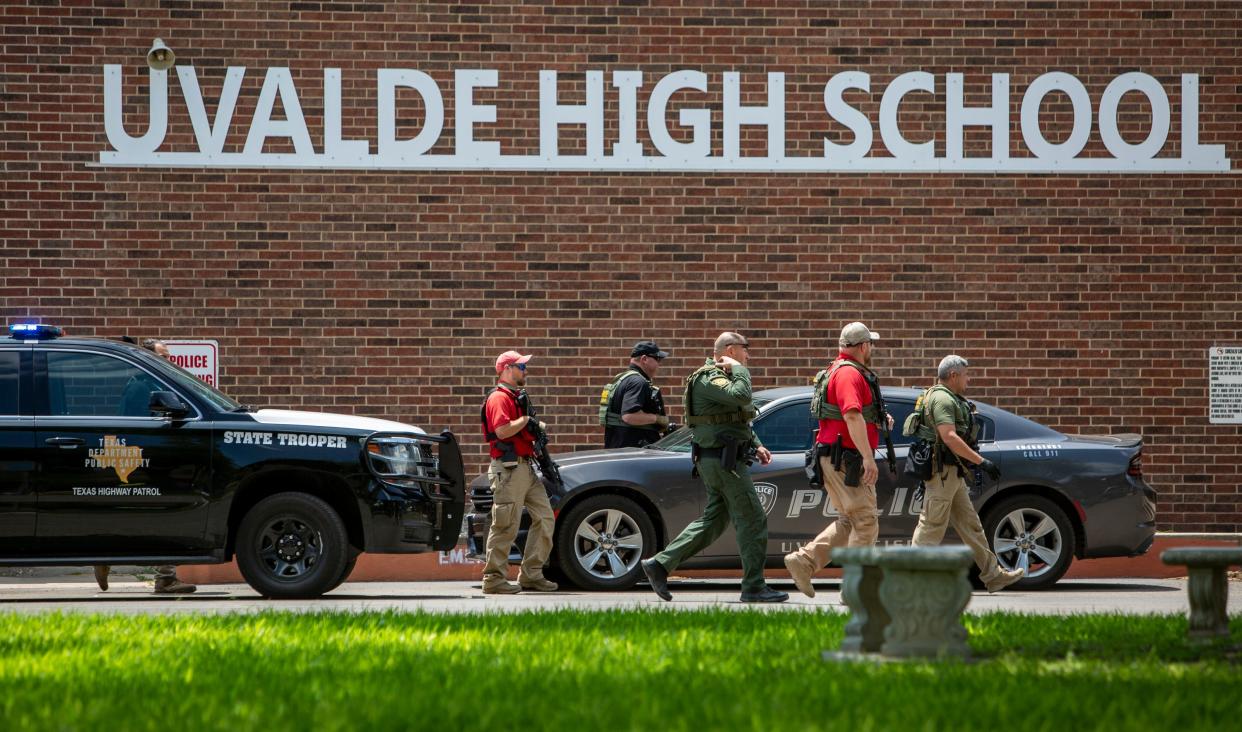Eight warnings behaviors of a potential mass shooter: Here's what to look for
It may be hard to know where to start when trying to identify suspicious or problematic behavior, especially after a mass shooting. But experts say it's important not to dismiss or ignore red-flag behaviors simply because you don't want to cause trouble.
USA TODAY spoke to Reid Meloy, a board-certified forensic psychologist who has researched warning behaviors preceding violence, consults for the FBI, and has consulted on criminal and civil cases in the United States and Europe. He has identified eight key warning signs of potential mass shooters.
"The important point here is these acts are not impulsive acts," Meloy said. "These are planned for and prepared for days and weeks in advance. These are not acts of impulsivity. That's why we've been able to show that there are these numbers of warning signs that people can see, observe and report."

Jason Williams, associate professor of justice studies at Montclair State University in New Jersey, said people with concerns should contact local law enforcement agencies and other programs that provide preventive services, particularly “if a person is expressly articulating that they want to do such harm.’’
"There's something within our broader culture that needs to change around developing empathy and sympathy for people and understanding that it's OK to step in,’’ Williams said.
More: Bloodshed since Sandy Hook: Uvalde school shooting among deadliest school attacks in past 10 years
More: 'It could be you': Mass shooters often warn people before they kill. What you can do to stop them
Eight key warning signs:
1. Pathway. This is when people plan and prepare the details of their attack, like accumulating ammunition, buying firearms in secret or building bombs or other incendiary devices in their garage.
"People see this anomalous behavior, but they ignore it as a possible threat," Meloy said. He noted that it's important to focus on the "discrete behaviors" rather than a person who may belong to a group different from you to avoid implicit and personal biases or prejudices. That said, Meloy noted, "most of these individuals will be young males."
2. Fixation. Somewhat self-explanatory, this is when a person may become fixated on someone or a cause so much so that it leads to deterioration in their social and work lives.
3. Identification. This is perhaps the most important of the warning signs, Meloy said: It's when a typically young male will assume a "dark identity." He takes on an identity that shifts from a preoccupation with other mass shooters to wanting to become one himself. In Parkland, Florida, the shooter posted on YouTube six months before opening fire at the high school that he was going to become a "professional school shooter."
In that case, "law enforcement failed to identify that as a flashing red light for the assumption of a dark identity, in the fact of chronic life failures," Meloy said.
4. Energy burst. You may see an acceleration of "on the ground" behavior and a decrease in online behavior in the hours before an attack as the attacker prepares. In the case of the Capital Gazette shooting in Annapolis, Maryland, in 2018, the shooter was active on social media and then went dark in the two years before the attack, Meloy said. It's important not to assume that the person no longer poses a threat when they go quiet.
5. Leakage. This is the most common warning sign, when a person communicates their intent to attack to a third party. It occurs in 60% to 90% of targeted attack cases, usually in the days or hours before the attack.

It can look like a direct message on Twitter, a posting on Instagram or TikTok, a still photo or video, or a verbal comment on a chat. The person is excited and has a secret they want to share with someone.
6. Directly communicated threat. The least frequent warning behavior is a direct threat to a target, because a potential attacker doesn't want to decrease their probability of success.
7. Novel aggression. A potential attacker tests their ability to be violent ahead of time, engaging in a one-off unusually aggressive behavior that is a test of their resolve to carry out a homicidal act. This could include picking a fight or killing an animal.
8: Last resort. The potential attacker says things that indicate an urgent need to act violently within a specific time. They might say it's "up to them" or use other words to communicate that they must act.

This article originally appeared on USA TODAY: 8 warning signs of a mass shooter, according to experts
